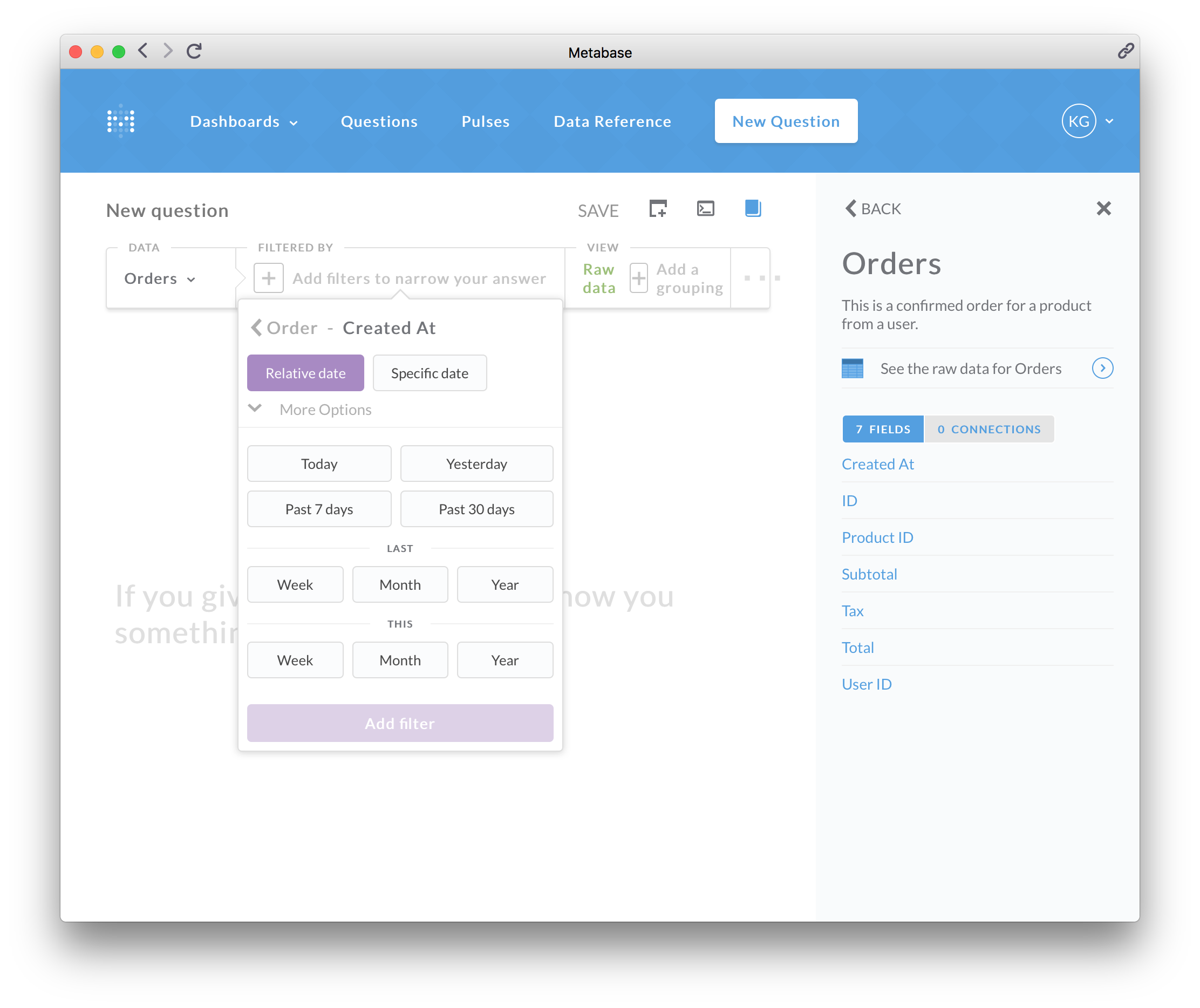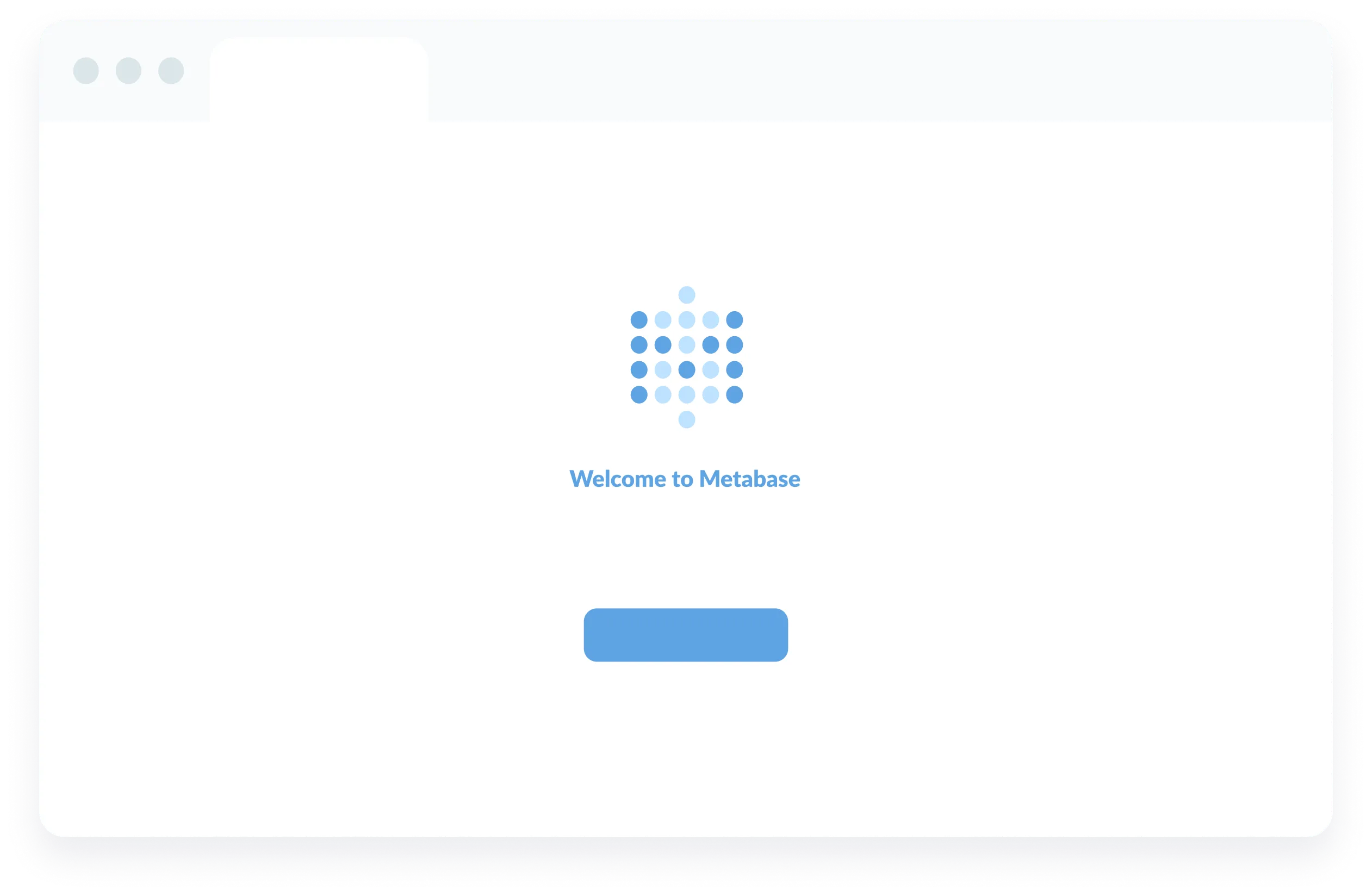
Once the installation finishes, run the following command to obtain the SSL certificates from Let's Encrypt.
#Metabase app install#
To install Let's Encrypt client also called Certbot run the following command. If you can want to use commercial SSL certificates instead, you can purchase SSL certificates from HostPresto. Now we will need to generate SSL certificates from Let's Encrypt client. Install nginx web server the following command.
#Metabase app update#
yum -y install epel-release yum -y update Nginx is not available in the default YUM repository, hence you will need to install EPEL repository also. This way the main application will run on port 3000, and nginx will work as a reverse proxy. Instead of using the application on Port 3000, you can use nginx to run on port 80 or 443 in the case of using SSL. Loaded: loaded (/etc/systemd/system/rvice enabled vendor preset: disabled)Īctive: active (running) since Sun 19:59:32 UTC 8h agoĪpr 09 20:01:44 ip-172-31-10-224 metabase: 04-09 20:01:44 INFO sync-database.analyze :: Analyzing data in H2.). You will likely see the following output. To check the status of the service, run the following command. To enable the application to start automatically at boot time, run the following command. You can now run the Metabase server directly using the following command. Save the above text into the Systemd service file. ĮxecStart=/bin/java -jar /var/metabase.jar Now add the following lines into the text file. To create a systemd service, create a new systemd service file using the following command. Move the Metabase jar file to another location using the following command. Using systemd service will automatically start the application on failures and boot time. java -jar metabase.jarīut it is recommended to create a systemd service to run Metabase jar file and create a reverse proxy with Apache or nginx for accessing the application on port 80.

To start the application immediately you can run the following command.
#Metabase app download#
You can always check for the link to the latest version of Metabase using Metabase download page. Now download the Metabase jar file using the following command: wget Java HotSpot(TM) 64-Bit Server VM (build 25.121-b13, mixed mode) Java(TM) SE Runtime Environment (build 1.8.0_121-b13) You will get the following output: ~]# java -version You can now check the java version using the following command. Now install the downloaded RPM using the following command. If you do not have wget installed, you can run the yum -y install wget to install wget. wget -no-cookies -no-check-certificate -header "Cookie:oraclelicense=accept-securebackup-cookie" "" In this tutorial, we will install the latest version of Oracle Java into the server. Metabase runs on both OpenJDK and Oracle JAVA.

Installing Metabaseīefore installing any package it is recommended that you update the packages and repository using the following command. If you are logged in as a non-root user, you can run sudo -i to switch to root user. You will need a minimal installation of CentOS 7 with root access on it. All the required dependencies will be installed throughout the tutorial. In this tutorial, we will install Metabase on CentOS 7 server. The application lets you visualize the data into beautiful charts and graphs. Metabase lets you easily filter and group the data to find something without writing the SQL query. It integrates with almost all types of databases and provides a very simple GUI to run queries on the database.

#Metabase app free#
Metabase is a free and open source GUI-based query tool.

Want your very own server? Get our 1GB memory, Xeon V4, 25GB SSD VPS for £10.00 / month.


 0 kommentar(er)
0 kommentar(er)
